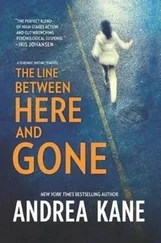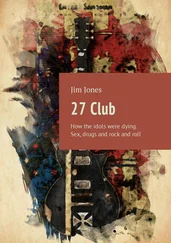A week after the Mount Shuksan climb, I moved to New Mexico with my job and immediately joined the search-and-rescue (SAR) group to which Mark had belonged for five years. The Albuquerque Mountain Rescue Council, the top team in the state for technical rock rescues, provided me unparalleled training and experience and introduced me to nearly every one of my climbing partners of the next three years. Living in Albuquerque also allowed me closer access to the peaks in Colorado where I spent an average of five days climbing each month, year-round.
With my summer of big-mountain adventures in Washington, and more time for training in the Colorado mountains, I had gained a significant amount of experience that prepared me for a full slate of winter fourteener ascents during the winter of 1999-2000. However, I was still at the mercy of the mountain gods. Greater-than-100-mph winds blasted me on the summit plateau of Mount Bross on December 22, repeatedly knocking me over. The entire time I was crawling and fighting for my balance, unbeknownst to me, the metal frame of my headlamp was conducting the heat off my forehead into the bitter windchill, leaving a Gorbachevian crimson frostbite mark centered between my temples. I joined my family that evening in Denver with a ridiculous purple brow that faded to a brown splotch, like the stain of a mild sunburn, after four days.
In the three days after Christmas that year, I surmounted five fourteener summits; two days later, I rang in the millennium in the Everglades of Florida with about twenty of my friends (and eighty thousand other fans) at my fiftieth Phish show. The band played continuously from midnight until dawn, nearly eight hours, in an incomparable marathon set. Later in the spring, four of my friends and I decided to go to Japan that summer to see the band play an entire tour of small venues; while we were there, we also hiked to the top of Mount Fuji, the first time I’d ever been to the highest point of a country.
Before the winter of 2000 was over, I soloed another six winter fourteeners back in Colorado, including the moderately technical Kit Carson Mountain and Blanca Peak, both in the southern Sangre de Cristo Range. On January 16, 2000, after nabbing the first documented ascent of the millennium on Blanca and its easier sister summit, Ellingwood Point, I descended briskly on a thin snowfield that barely covered some underlying boulders. At about 12,000 feet, I broke through the snow crust up to my right knee for about the hundredth time-I was bruising and scraping the front of my shins from bashing into the leading edge of the crust each time I stumbled-but this time I couldn’t pull my leg out of the hole. I yanked and yanked without reward; a rock had shifted under the snow, trapping my foot at the ankle. There wasn’t much pressure against my foot, but the boot was stuck fast, and I couldn’t budge the rock from my forward-leaning position. I would have to dig away the snow, then move the rocks to get my boot out, which would be easier if I weren’t lodged in place. Wriggling my hand down into the hole, I released my shoelace, yanked my foot out of the boot, and rolled over onto my right side, trying to keep my sock-covered foot out of the snow. Fifteen minutes later, I had my boot once more. The experience gave me cause to wonder what might have happened if not just my boot but my leg had been stuck, or if I’d twisted my ankle or even broken my leg. Could I have survived a night in the open? I had a 30-degree sleeping bag compressed in the bottom of my pack, and a stove and fuel, but nighttime temperatures were cold enough that I had my doubts. Shrugging off the accident as a brief delay, I nevertheless avoided two other shallowly buried boulder fields during the remainder of the descent.
Over the course of the winter, I learned about the concept of deep play, wherein a person’s recreational pursuits carry a gross imbalance of risk and reward. Without the potential for any real or perceived external gain-fortune, glory, fame-a person puts himself into scenarios of real risk and consequence purely for internal benefit: fun and enlightenment. Deep play exactly described my winter solo fourteener project, especially when I would begin a climb by heading into a storm, accepting malevolent weather as part of my experience on that trip. Suffering, cold, nausea, exhaustion, hunger-none of it meant anything, it was all part of the experience. The same went for the joy, euphoria, achievement, and fulfillment, too. I found that I could not set out with the intent of having a particular experience-safety precautions and risk management aside-my goal instead was to be open to what that day was giving me and accept it. Expectations generally led to disappointment, but being open to whatever was there for me to discover led to awareness and delight, even when conditions were rough. Mark Twight, an American alpinist with an extraordinary history of success and misadventure at the most extreme level of mountaineering, wrote in a climbing essay, “It doesn’t have to be fun to be fun.” Precisely.
In my next two winter fourteener seasons, I would tackle increasingly difficult ascents; however, I had saved the most technical and remote peaks for the second half of the project. With time, I became more efficient with my climbing and camping methods and equipment, and made gains with my fitness and acclimatization, which allowed me to attempt longer and more strenuous routes. I always established an itinerary and communicated my expected return time to my parents or roommates, and chose routes and adjusted my schedule to minimize avalanche exposure-the deadliest objective hazard of the project.
By the end of 2002, I had completed thirty-six of the fifty-nine fourteeners in four winters. My achievements were greater than the numbers-I was consistently creating for myself new experiences that no one else in the world was having. It was common when I signed in at trailhead registers to see that the last entry before mine was three, four, or sometimes five months old. On the occasions when I would return to a summit in the summer, my entry would be the only one in a seven- or eight-month period. With the solitude that came from being in places four months removed from others’ presence, I felt a sense of ownership of these cold high mountains, these buried alpine tarns, these sound-dampened forests; and a sense of kinship with the elk, deer, beaver, ermines, ptarmigans, and mountain goats. The more I visited their home, the more it felt like mine.
In the willow thickets of Mount Evans’s west bowl, I almost stepped on a snow-white ptarmigan that cooed and hopped out of my way at the last instant. Bending down to the bird, I fell into a trance in its ink-drop eyes. The universe expanded; neither of us moved. I felt a connection with that little puff of feathers on its matching snow pillow that seemed to surpass my bond with my own species. With our coexistence in the wintry landscape, we shared more than I did with the other humans who would never journey into this world. I took a picture to show my friends, but despite my explanation, they saw only the ptarmigan, not the connection.
These places, and the experiences I had in them, were mine and mine alone. The senses of solitude, ownership, and place that I felt on these trips were creating a private world that, by definition, was impossible to share. Nevertheless, I tried. I took photographs and posted online albums of my trips; however, the images failed. They were unsuccessful because they were removed in time and location from what I went through to be in that place at that time. To a person sitting in an office or a living room, a picture of a winter mountain sunset is just a picture. To me, it was the experience of taking the picture. For instance, after snowshoeing for eight hours with my fifty-pound pack up Cottonwood Creek Valley, through an untracked forest of bottomless powder, past frozen cascades, I attained the 13,000-foot pass between Electric and Broken Hand peaks. From a vantage worthy of an Albert Bierstadt painting, I watched the red sunset light of the millennium’s first winter solstice transform Crestone Needle’s snow-plastered rock ribs into a purple mountain so majestic I cried at its beauty. A picture couldn’t do the experience justice-no matter my photographic talents, I couldn’t make the viewer feel the transcendent combination of depletion, fatigue, hypoxia, elation, and accomplishment that I felt in reaching such a sublime vista at that twilit moment.
Читать дальше












